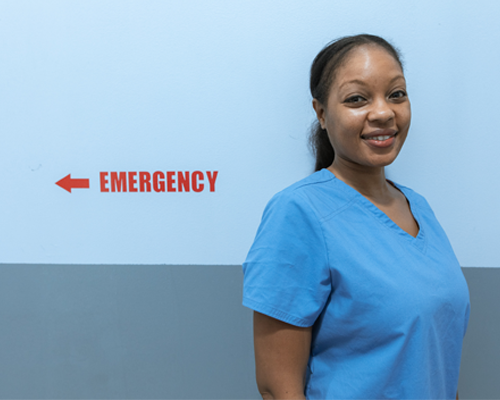#NursesDay #InternationalNursesDay
International Nurses Day is held annually on the 12th of May. Initially the idea of a “Nurses’ Day” was proposed in 1953 by a US Department of Health official, Dorothy Sutherland, however, it was rejected by then-President Eisenhower. The International Council of Nurses (ICN) took the initiative in 1965 to begin celebrating the 12th of May, Florence Nightingale’s birthday, to honour the selfless work that nurses do. In 1974, “International Nurses Day” was officially recognised.
Every year, the ICN chooses a specific theme and prepares kits with resources for nurses associated with the theme of the year. 2022’s theme is ‘Nurses: A Voice to Lead – Invest in Nursing and respect rights to secure global health.’ Often the work of nurses is overlooked, but it is important to remember the crucial role they play in caring for and educating patients.

In fact, nurses are the pioneers of modern health care and are responsible for many improvements we take for granted. Here are some examples of how nurses have changed the face of patient care for the better:
Sanitary conditions
Florence Nightingale, the innovator behind the principles of modern nursing, revolutionised health care for all. A highly-educated woman who sought professional stimulation, Nightingale dedicated herself to nursing, much to the dismay of her upper-class British parents. In 1854, she was asked by the British government to head a nursing unit treating wounded British soldiers fighting in the Crimea War.
The conditions in the hospital were harrowing and patients were getting sicker because of the unsanitary environment. Upon arrival, the nurses set out to implement scientific principles to improve the conditions of the hospital. Everything was sanitised, windows were opened to allow fresh air to fill the foul rooms, and nutritious, fresh meals were prepared for the wounded soldiers. Medicine and treatment were administrated by the nurses in an efficient manner.
Nightingale, who became known as the “Lady with the Lamp” because of her nightly visits to patients, drafted an 800-page report on the welfare of patients in the hospital and after returning to Britain began to advocate the importance of quality nursing in military hospitals. Her approach to nursing saved countless lives and her efforts did not go unnoticed. By the end of the 19th century, thanks to her, the importance of educating nurses on a hygienic and effective treatment became a priority.
Establishment of ICU and other critical care units
Nurses are credited with transforming the reorganisation of hospitals as well as their hygiene practices. They found the most efficient care was given in a highly-organised environment with clear structure and order. In the USA during the late 1950s, nurses began to systemise the hospital so that the sickest patients were together, to make it easier to monitor and treat them. This was inspired, again, by Nightingale’s decision to locate the beds of the most critical patients during her time treating soldiers near the nursing station and is considered the creation of intensive or critical care units. Although these units are unrecognisable now thanks to modern technology, the distribution of patients within a hospital hasn’t changed.
Prioritising women’s health
Nursing was traditionally seen as a woman’s profession. For this reason, it doesn’t come as a surprise that the care and treatment of women, particularly childbearing, was tasked to nurses. Initially, nurses worked with governments and charities to push for proper medical care for women and children. Until the 1930s, most women had homebirths, a tradition that often put the life of the mother and baby at high-risk. In the 1960s, the beginning of the women’s movement spurred the need for nurse-midwives. Unlike traditional midwives, who delivered babies at home, these nurses were experts in child delivery who could avail of the life-saving techniques and technologies available in a hospital setting if a birthing issue were to occur. Thanks to these precautionary measures, maternal mortality has reduced hugely in developed countries.

An educated nurse, an educated patient
While it was Nightingale who implemented sanitising in the hospitals she worked in, a practice that soon spread globally, it wasn’t until the early 20th century that the ‘germ theory of disease’ became popularised. This meant people now knew the cause of fatal diseases, like tuberculosis, was caused by the spreading of microorganisms. It was nurses who took the responsibility to educate others on the importance of the prevention of infection. They informed patients how to prevent spreading disease and those around them, how to avoid contracting it by implementing basic hygiene practises in the home and around invalids.
Even nowadays, nurses are often responsible for educating patients on how to take care of themselves, or for sharing vital information with those caring for recovering patients. Nurses are most often the point of contact for patients in health care facilities and are responsible for communicating with them. The support and knowledge that nurses provide can often put a patient’s worries at ease and reduce the psychological burden illness can have on a patient.
*
In 2020, the World Health Organisation chief Tedros Adhanom Ghebreyesus referred to nurses as “the backbone of any health system”, a statement with historic significance. Nurses continue to be in demand and Ghebreyesus warned that nearly 6 million nurses were needed to fill vacancies at the time. With a global population that is aging, the need to provide care and support will continue to grow. Additionally, the skills and knowledge of rapidly developing technological advancements that nurses will need to operate will require additional and constant training so it is vital that the right resources are allocated. By investing in nursing, we invest in the trailblazers of modern clinical care and secure global health care.







